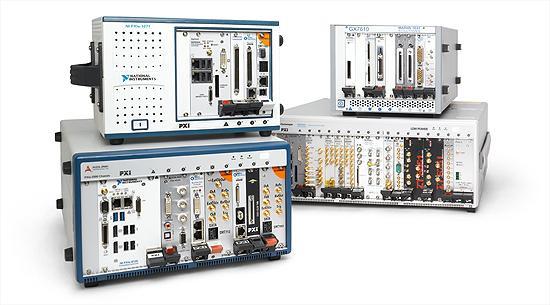Addressing test equipment obsolescence can be a daunting task, further complicated by the speed of innovation. However, you don’t need to be a seasoned engineer or technician to understand the importance of the topic! This post will go over the basics of test equipment obsolescence, providing a starting point for anyone new to the industry or simply looking for a comprehensible guide.
What is Test Equipment?
Before we can discuss the impact of obsolescence on test equipment, we have to define what the term “test equipment” means. Test equipment refers to the machines and tools that are used to measure, test, and assess the functionality and properties of other systems and components. Testing instruments are also used to test the quality of products to identify any issues and to confirm that they meet all applicable standards.
The test equipment used for a system depends on the specific industry and use case it is needed for. Test equipment comes in a variety of forms, from simple portable devices to sophisticated automated systems, and is used for electronic, automated, and mechanical testing applications- to name just a few. Some examples of test equipment include logic and spectrum analyzers, signal generators, oscilloscopes, power supplies, and multimeters.
When Does Test Equipment Become Obsolete?
There are two main reasons why test equipment is declared obsolete: advancements in technology and discontinued production. As technology improves, existing equipment becomes outdated. Most manufacturers will switch over to the latest iterations of equipment series as they become available, phasing out production of the previous equipment and ceasing support or maintenance services. NI specifically takes a 4 phase “life cycle” approach to their products, ranging from “Active” (the most current version available on the market), to “Discontinued” (the product is no longer eligible for purchase, repairs, or calibrations).
Over time, equipment can become incompatible with other parts in the system that have been updated or replaced, resulting in the equipment no longer being able to function as needed. However, a complete overhaul of a test equipment system to the most current versions is simply not feasible for most companies, especially at the rapid rate at which technology is advancing.

What is the Result of Test Equipment Obsolescence?
For companies who are unprepared, test equipment becoming obsolete can have troubling consequences- including a slowing or halt of production, a decrease in efficiency, and an increase in costs. Understanding obsolescence and having a plan in place to address it is a crucial part of test equipment management. This is especially true for sectors such as aerospace and military defense. In contrast to typical consumer goods that have a short lifespan (think cellphones), “products” in the aerospace and defense industries are created to be supported for decades. This presents special challenges to these test engineers, who end up spending most of their time working with out-of-date equipment that is especially difficult to replace or update.
How Should Obsolescence be Addressed?
The best approach to addressing test equipment obsolescence is a proactive one. When planning out the future of your test equipment hardware, consider the importance of modular systems such as the PXI. The PXI platform features specialized synchronization buses that allow for a gradual migration to new technologies using PXI-VXI adapters, allowing you to upgrade your technology in stages and eliminating the need for a complete overhaul of your test equipment infrastructure. The structured replacement of all modules simplifies the process of replacing chassis and controllers in the future.
Software is also a key consideration when planning for obsolescence. HALs (hardware abstraction layers) and MALs (measurement abstraction layers) allow for the code of the instrumentation to be abstracted and separated from the hardware. HALs also take into consideration the differences between various data scales, allow for timing and synchronization variations, make adjustments for changes in data creation, check for mistakes, mimic instruments, and have the ability to inject faults to revalidate test systems. Adding an abstraction layer to your test system helps you address software and hardware issues independently.
Where Does Apex Waves Fit in?
Apex Waves fills in the gap for system maintenance. We specialize in obsolete NI hardware, providing a solution for companies who cannot refresh their entire system and need a specific part to prevent issues with their instrumentation. We have worked with the United States Navy, as well as with aerospace companies including NASA, SpaceX, Lockheed Martin, Boeing, and Honeywell. We have thousands of parts in stock that have been fully tested and are ready to ship as soon as possible, all covered by a 2-3 year warranty. When you need to track down an exact model or get repair / calibration services, reach out to Apex Waves!







